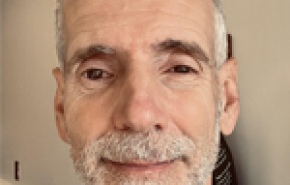Teaching and Communication Tools for Enabling Statistical Thinking
| Date | 10 - 12 Jan 2023 |
| Time | 16:00 GMT+01:00 - 20:00 GMT+01:00 |
| Level of instruction | |
| Instructor |
Ashley Steel
Peter Guttorp
Martin Liermann
|
| Registration fee |
Developed country
100,-
Developing country/Students
60,-
|
Course description
Many failings in the application of statistics do not result from errors in calculations but from logical and conceptual misunderstandings. Selection of methods for data analysis, interpretation of data and testing results, and application of statistical information in decision-making, for example, all demand strong foundations in probabilistic thinking. This course supplies tools and best practices for teaching and communicating statistical thinking as a foundation for conducting, understanding, and applying statistics. While the statistical community has a wide variety of successful tools for teaching statistical calculations and tests, examples and resources for teaching statistical thinking are less common. We include examples from scientific studies, official statistics, working with decision-makers, and communicating to the general public.
The first half of the course will focus on common errors in statistical thinking and how to avoid them. It includes methods for thinking in simulations; how a single statistical analysis fits into the larger supply-chain of knowledge; and what p-values are and how they are often misused. We will conduct hands-on activities that can be used in a wide variety of settings, including on-line workshops. A set of these activities have paired R-labs for those teaching statistics courses.
The second half of the course focuses on statistical communication and the responsibilities of statisticians in communication of data and uncertainty. We cover some classic and fascinating examples of statistical miscommunication and work in groups on statistical communication challenges. Activities focus on communication of scientific results as well as official statistics and, in particular, on best practices for communicating uncertainty so that the uncertainty can be leveraged in decision-making. These activities will be enable anyone teaching statistics as well as anyone consulting or communicating in the field of statistics to more clearly articulate the interpretation of scientific studies as well as why there is uncertainty, what it means, and how that information can be applied in a decision-making context.
Course materials that will be provided to participants include the course slides and lesson plans for both hands-on activities and R-labs as well as a reading list.
The target audience focuses on statisticians teaching statistics courses at the undergraduate and graduate level and will also be relevant to anyone conducting statistical consulting or communicating statistical work to those without a strong statistical background. There are prerequisites.
It is not possible to register any more. Please keep an eye on the website about possible new dates.
Instructors

About the instructor
Ashley Steel worked as a statistician and an ecologist for the US Government from 1999 – 2018.
She served as Team Lead for Landscape Ecology and Recovery Science (National Oceanographic and Atmospheric Administration, NOAA) and Lead Statistician for the PNW Research Station (US Forest Service).
She recently entered the world of official statistics at the Food and Agriculture Organization of the United Nations (FAO) where she works in forest product statistics.
Her main projects include modeling global woodfuel production, estimating carbon storage in harvested wood products, quantifying collection of wild foods from forests, enabling multi-disciplinary watershed management, and statistical capacity development.

About the instructor
Peter Guttorp, Professor Emeritus of Statistics, Professor at the Norwegian Computing Center, Adjunct Professor of Statistics at Simon Fraser University. He obtained a degree in journalism from the Stockholm School of Journalism in 1969, a B.S. in mathematics, mathematical statistics, and musicology from Lund University, Sweden, in 1974, a Ph.D. in Statistics from the University of California at Berkeley in 1980, and a Tech.D. h.c. from Lund University in 2009. He joined the University of Washington faculty in September 1980 and retired in June 2015.
Dr. Guttorp’s research interests include stochastic models in scientific applications in hydrology, atmospheric science, geophysics, environmental science, and hematology. He is a fellow of the American Statistical Association and the Institute for Mathematical Statistics, and an elected member of the International Statistical Institute, for which he was a Vice President 2017-2021. During 2004-2005 he was the Environmental Research Professor of the Swedish Institute of Graduate Engineers,]in 2014 he was a Chalmers Jubilee Professor, and in 2022 a Waern Professor at Gothenburg University.

About the instructor
Martin Liermann has worked at the National Marine Fisheries in Seattle as a quantitative ecologist since 1997 and is affiliate faculty in the University of Washington’s Statistics department. He received a BA in mathematics, and an MS in mathematics and environmental sciences at Humboldt State University (Arcata California) in 1989 and 1991. He completed his Ph.D. in quantitative ecology and resource management at the University of Washington (Seattle Washington) in 1999.
Martin is interested in the application of quantitative tools to ecological problems especially as they apply to questions that arise in habitat and fisheries management. Recent topics he has worked on include salmon population dynamics, temporal dynamics of wood loading in small streams, juvenile salmon bioenergetics and movement, and evaluating different estimators for returning adults and out-migrating juvenile salmonids.